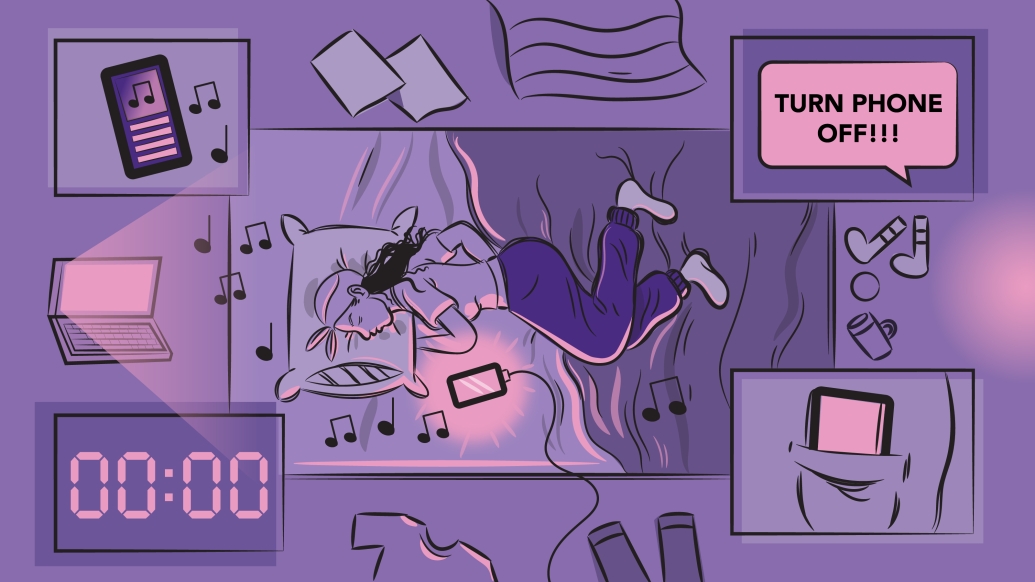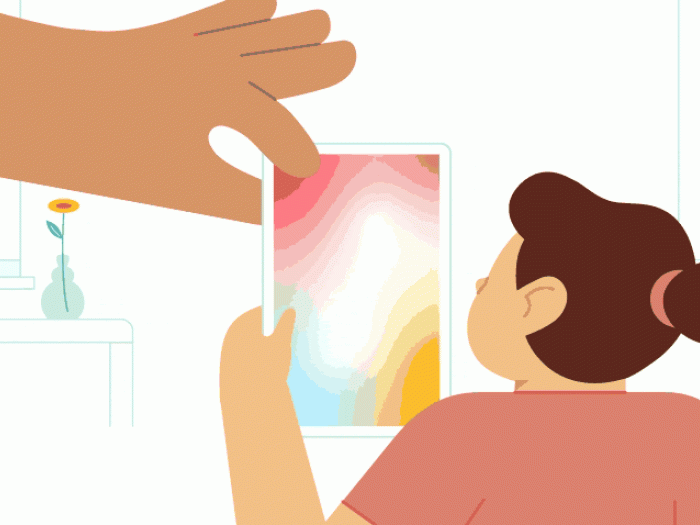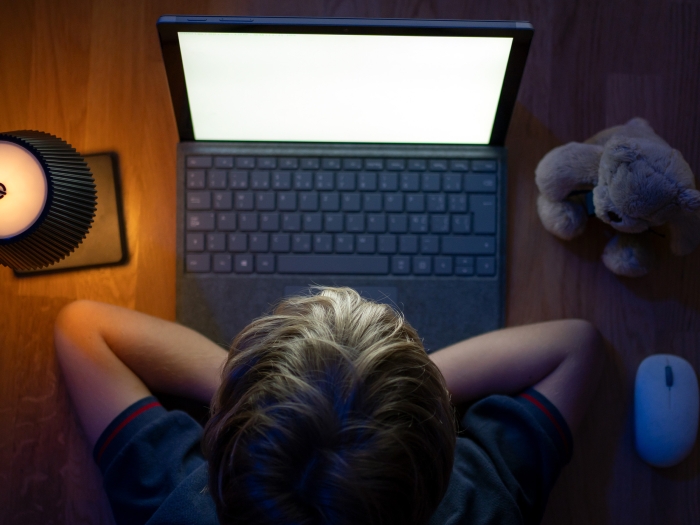A report explores tween and teen relationships with phones, offering families guidance to promote healthier technology habits
11:47 AM
Author |

On a typical day, teens in a recent study received about 240 phone app notifications, with a quarter of these messages arriving during school hours and another 5% at night.
Median phone use among adolescents in the report, co-led by University of Michigan Health C.S. Mott Children’s Hospital and Common Sense, was almost four and a half hours, with individual use ranging from just a few minutes to over 16 hours a day.
The study is based on data from a sample of 203 tweens aged 11 to 12 and teens ages 13 to 17 who have their own smartphones, combined with young people's own insight from the Common Sense Youth Advisory Council.
“Smartphones burst into teens’ lives around 15 years ago and have become a constant companion for several reasons,” said lead author Jenny Radesky, M.D., developmental behavioral pediatrician at Mott and Michigan Medicine researcher.
SEE ALSO: Social media use is a double-edged sword for teens. What can caregivers do?
“Phones are an immediate portal to friends, entertainment, and stress relievers during a busy day – but they also have revenue-driven, engagement-prolonging designs that keep kids on longer than they intended. Many teens evolve strategies to mute notifications or separate from their phone when they want focused time, but this isn’t universal.”
Below, Radesky explains more of the report’s key findings and how parents can support healthy use of technology.
How parents can support healthy technology use in tweens and teens
School phone use is common and policies are inconsistent
Almost all the participants use phones at least once during their school day for a median of 40 minutes.
“Families and teens report that policies about phone use in schools vary, sometimes even from classroom to classroom, and aren't always enforced,” Radesky said.
“The fact that nearly a quarter of phone notifications arrived during school hours suggests that apps could do a better job of reducing unnecessary notifications at times of day that are more disruptive to young people.”
TikTok and YouTube are among apps that dominate time
The participants in the sample used a total of 1,644 unique apps over the week that their smartphones were tracked and individuals used anywhere from five to 125 different apps, averaging about 40 different apps overall.
Social media apps were the most common, used for the longest each day, making up roughly 42% of a participant's overall smartphone usage, followed by YouTube at 19% (which includes YouTube, YouTube Kids, and YouTube TV) and mobile gaming (11%.)
TikTok and YouTube had the biggest number of users who spent several hours per day using these apps, with 64% spending more than an hour a day on TikTok, and 41% doing the same on YouTube.
“Young people told us that they are definitely drawn to TikTok’s bite-sized content that provides small doses of pleasure when they need a short break or distraction,” Radesky said.
SEE ALSO: Persuasive Digital Design: Appealing to Adults, Problematic for Kids?
“They told us how easy TikTok content is to use, even in between classes, because it requires little decision-making and uses an algorithm that’s likely to serve up content tailored to the specific user.”
Meanwhile, despite their popularity, photography and camera apps, phone calls and music apps were only used for a few minutes per day.
Smartphones may allow access to age-inappropriate experiences
Of 85 participants who were under age 13, 68% used social media apps (whose policies state they should only be used by teens 13 and older), and they all used at least one app rated "teen" or higher.
The top three most popular social platforms among 11- to-12-year-olds were TikTok, Snapchat and gaming platform Discord.
Almost half of all participants used apps with mature (17+) or adult only (18+) ratings, such as Pornhub, fantasy sports and betting apps (Yahoo Fantasy Sports & Daily, Sleeper Fantasy Football), Telegram, Reddit, casino games or violent games.
“App stores have age ratings that set age recommendations for specific apps, but these are not routinely enforced and age-restricting ‘gates,’ such as entering a birth date, have always been easy to bypass,” Radesky said.
“This makes it relatively easy for young smartphone users to inadvertently find or intentionally seek digital territory that’s not intended for them.”
Phones both help and hurt sleep
Over half of participants used their phones on school nights, often to listen to music to wind down or get to sleep.
However, some young people say their days are so busy that bedtime is the only time they can relax with their phone, cutting into sleep.
“Teens told us that the most effective way to maintain boundaries around phone use at night was to simply keep it out of their room. Otherwise, they had to work to resist notifications, entertaining social media feeds, or gaming,” Radesky said.
Young people may need help setting phone limits
Parents and kids can work together to use phone and app settings that promote healthier technology habits.
This may include muting notifications during the school day and past a certain hour in the evening, limiting unwanted interactions and blocking comments, using the “do not disturb" settings on some apps and storing phones in certain places during the day to reduce temptations.
“Many young people in our report indicate they’re taking steps to protect their digital wellbeing, like setting time limits and prioritizing certain types of notifications,” Radesky said.
“But the business model of these apps and devices depends on young people picking up their phones and engaging with them as much as possible, and it's clear that teens are struggling to set boundaries.”
Conversations with kids may help increase their awareness of their relationship with technology
Adults can ask their kids questions that help them gauge how technology interactions are affecting them, Radesky suggests.
Questions may include:
- What is your favorite app? Do you feel stressed or excited by it? Or both?
- What does it feel like when your phone is commanding your attention versus just being in the background of your mind?
- What does it feel like when you don't have your phone or the room is too quiet? Are you worried about missing out on anything?
- Have you ever noticed what you're thinking about if there's no background noise on?
- Do you ever get a sense that you've been on your phone too long? What are the signs?
Parents may also ask their children and teens to notice which design features make it so hard to disengage with favorite apps and awareness that social media platforms use algorithms that predict what they may be interested in.
“Adults can help kids be more aware of their emotional relationship with their phone and why they may find it difficult to disengage,” Radesky said.
“We can play a role in teaching them to be less passive, take more control and be more conscious about how they interact with their device and how it makes them feel.”
Parents should try to reserve judgement
Radesky points out that apps are designed in a way to keep kids on them longer, with hidden agendas such as generating more advertising revenue or collecting data for targeted marketing.
“Parents and guardians should be sensitive to the fact that the companies building apps have incentives to design features that capture kids’ attention for longer and it's not just a child’s lack of ‘willpower’ that keeps them on their phones,” she said.
Radesky notes that young people are growing up with smartphones at their sides and whether adults like it or not, it’s become their treasured tool to connect with friends, explore their identities, and learn about the world.
“This type of research helps shed light on what draws young people to their phones, and allows families, educators, and leaders to better understand where and when to provide support,” Radesky said.
“But the industry can also take steps to design apps and phones that promote healthier phone use by kids. Young people should be able to use their phones for all the valuable benefits without the challenges that negative content, persuasive design, and aggressive business models pose to digital well-being.”
Report cited: “Constant Companion: A week in the life of a young person’s smartphone use”

Explore a variety of health care news & stories by visiting the Health Lab home page for more articles.

Department of Communication at Michigan Medicine

Want top health & research news weekly? Sign up for Health Lab’s newsletters today!





